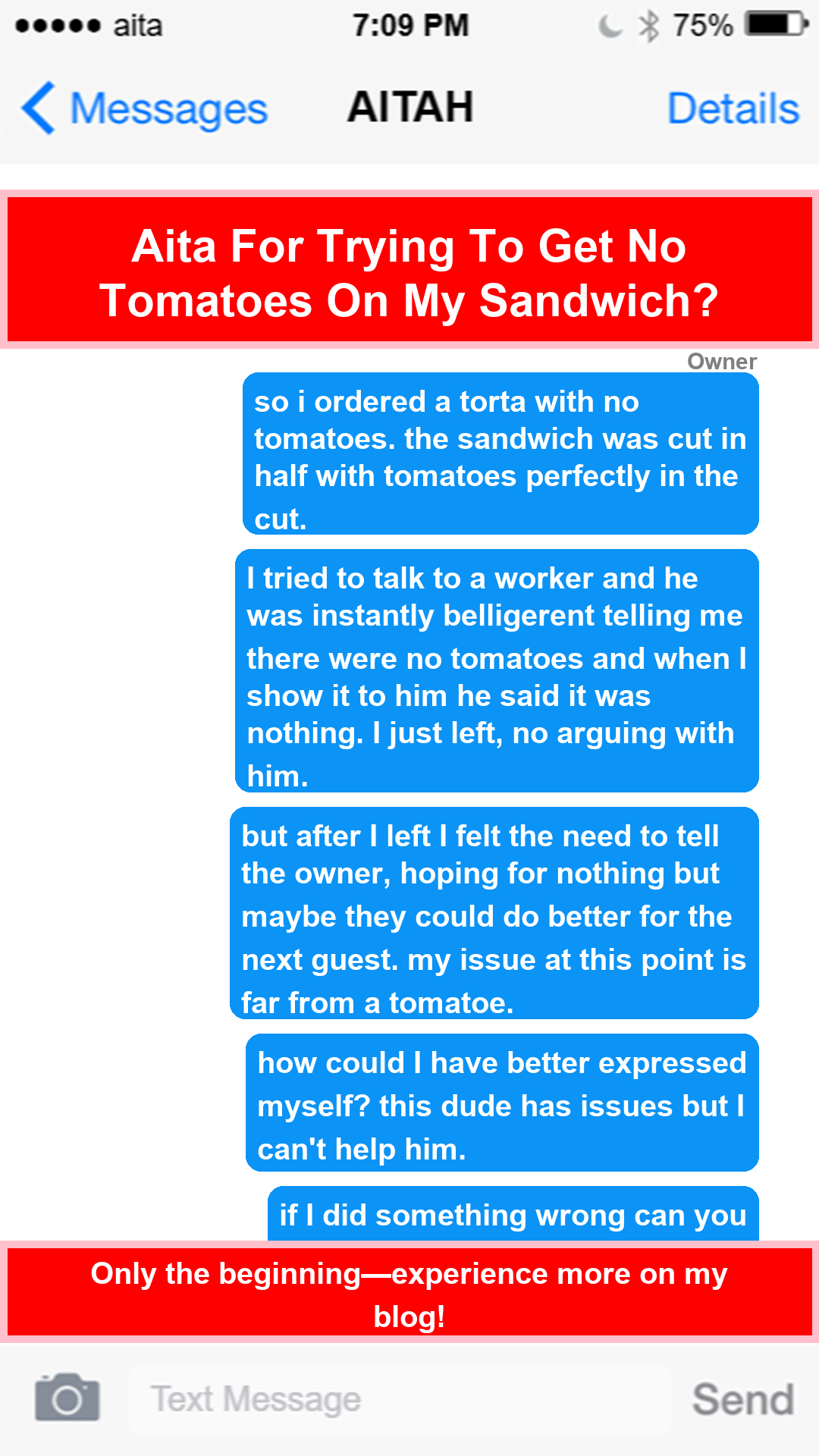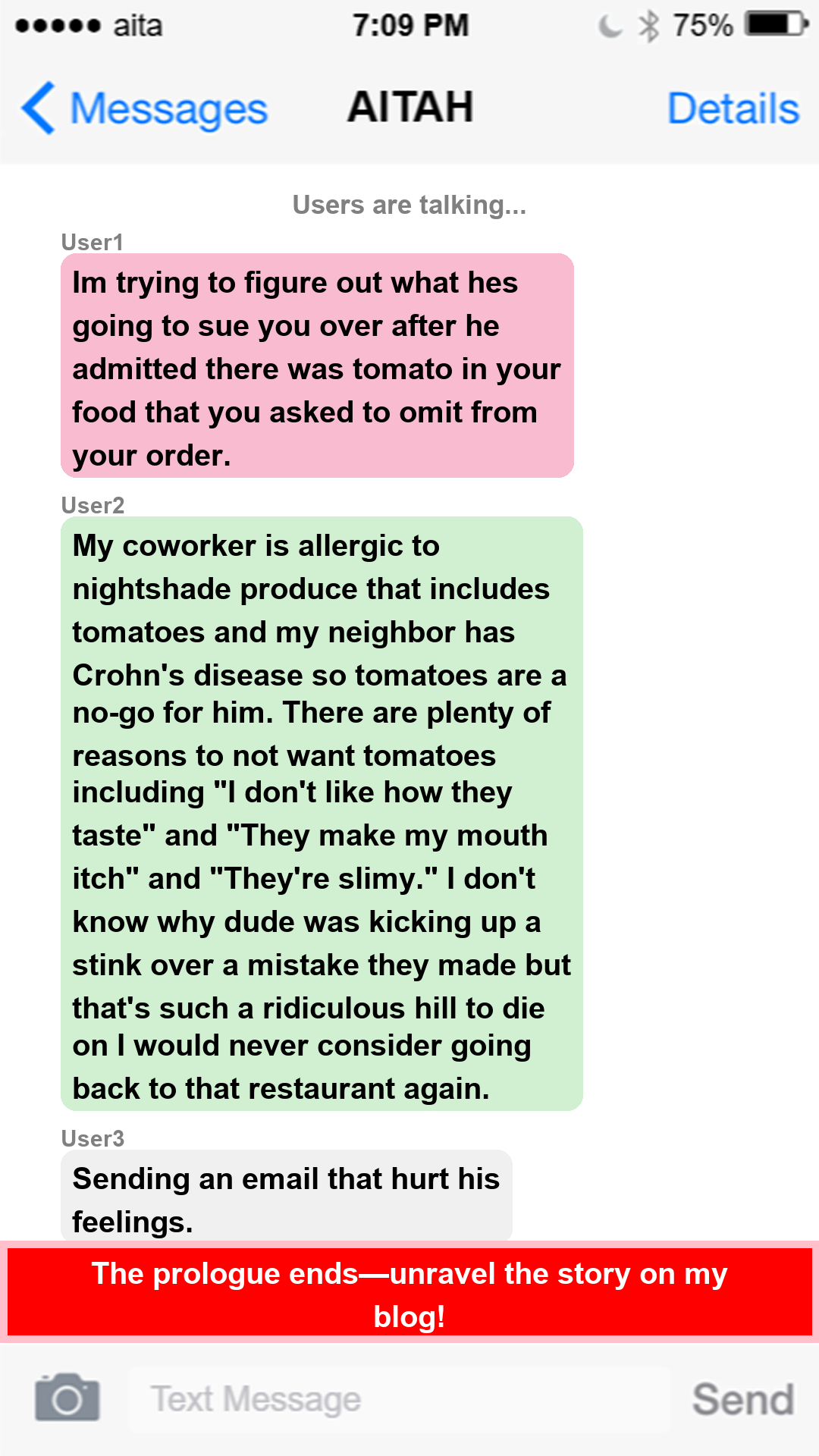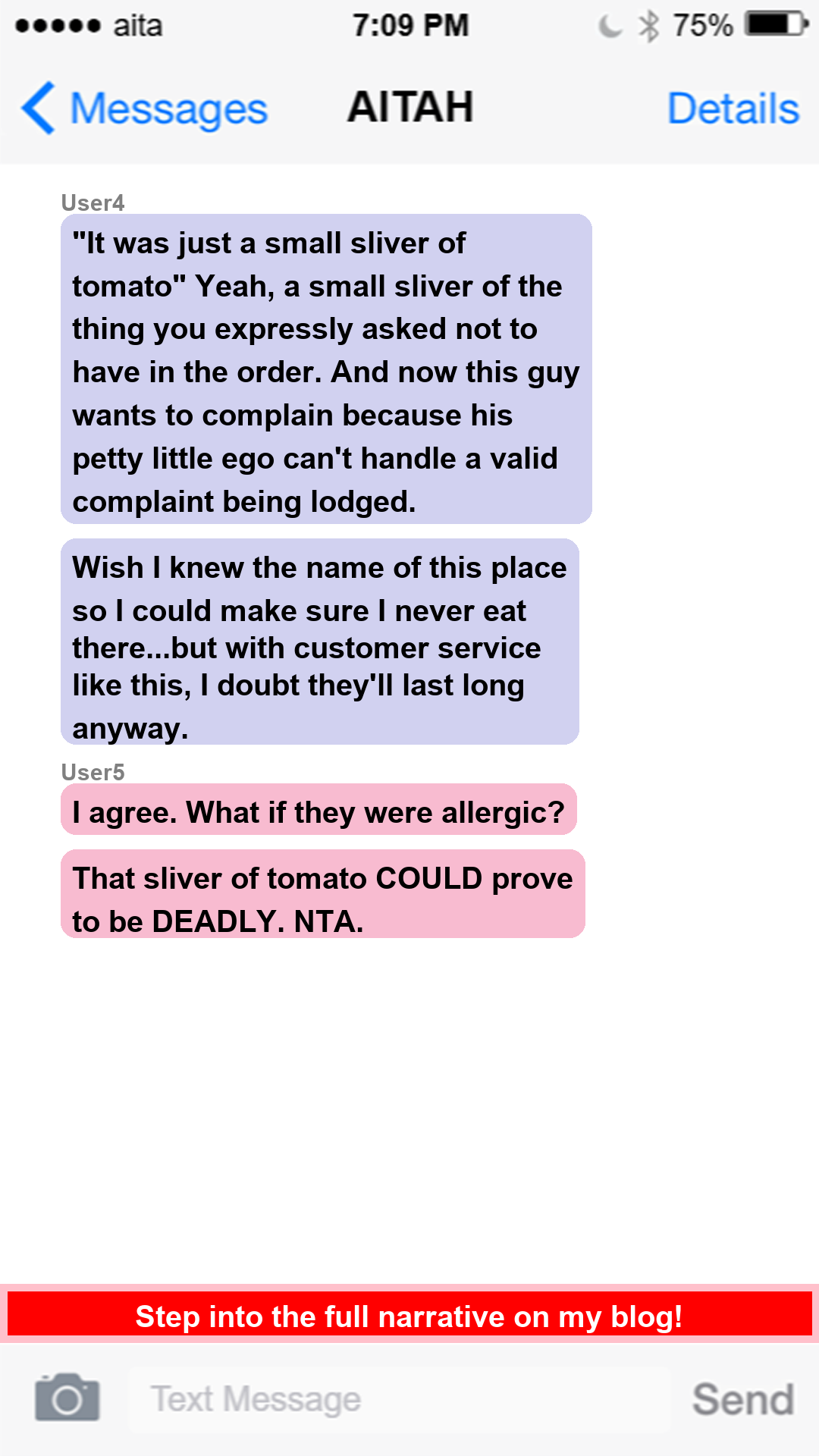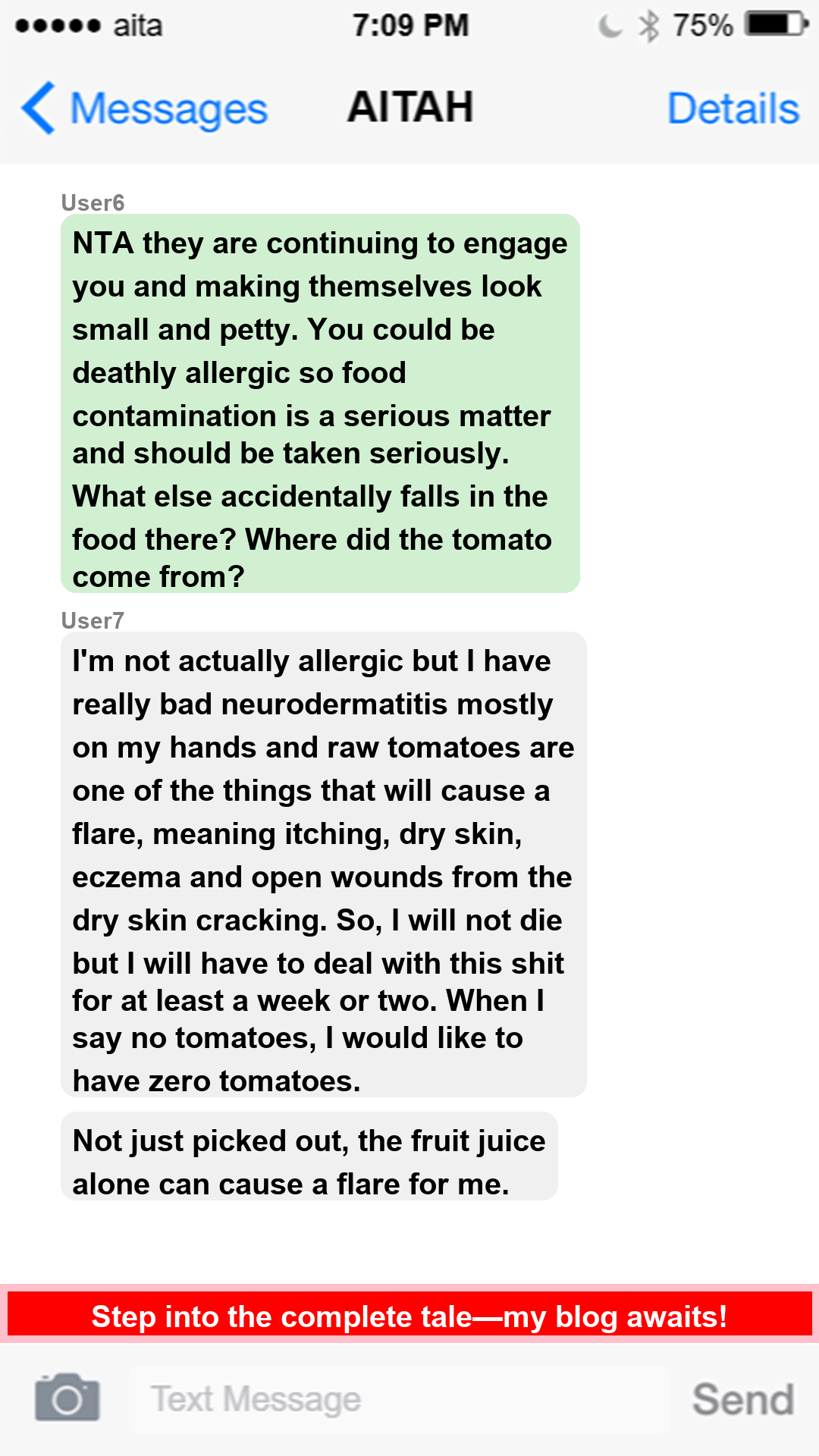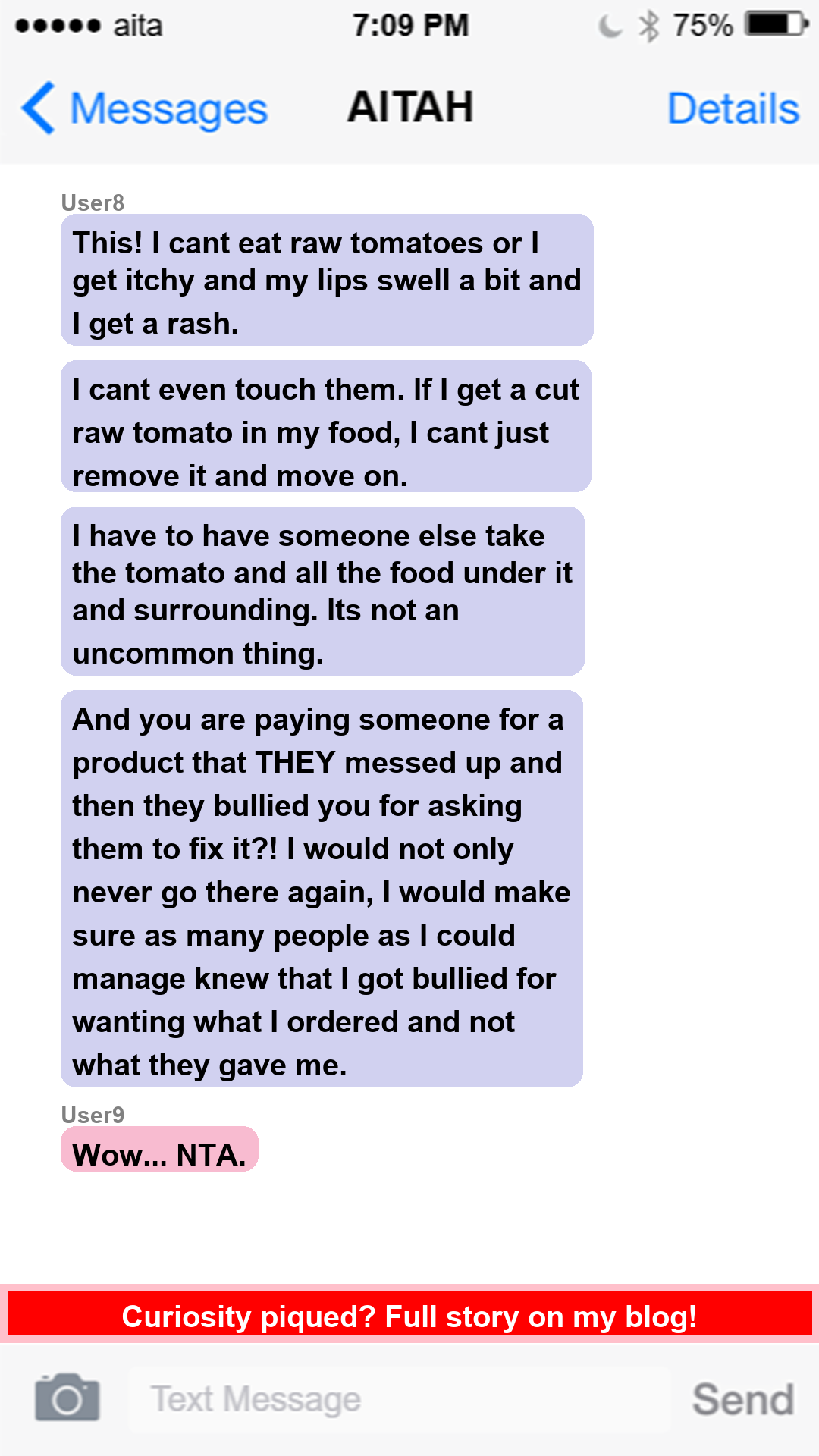AITA for trying to get no tomatoes on my sandwich?
 Image credit: Pixabay (This is example image – Not the actual photo)
Image credit: Pixabay (This is example image – Not the actual photo)
When a Simple Order Turns into a Frustrating Encounter
After ordering a torta without tomatoes, a diner finds themselves facing an unexpected confrontation with a belligerent worker who refuses to acknowledge the mistake. Despite the initial frustration, the diner reflects on their experience and questions their own response, pondering how to communicate more effectively in the future. This relatable scenario highlights the everyday challenges of customer service interactions and the struggle to assert oneself without escalating conflict. It raises thought-provoking questions about communication and empathy in our daily lives.
Conflict Over a Torta Order
In a recent dining experience, a customer faced unexpected family drama stemming from a simple sandwich order. The situation escalated due to a misunderstanding and poor communication, leading to feelings of frustration and disappointment. Here’s a breakdown of the events:
- Order Details: The customer specifically ordered a torta without tomatoes.
- Delivery Issue: Upon receiving the sandwich, the customer noticed that it was cut in half, revealing tomatoes inside the cut.
- Initial Interaction: The customer approached a worker to address the issue. However, the worker responded belligerently, insisting there were no tomatoes in the sandwich.
- Escalation: When the customer pointed out the tomatoes, the worker dismissed the concern, stating it was “nothing.”
- Decision to Leave: Feeling frustrated, the customer chose to leave the establishment without further arguing.
- Afterthought: The customer reflected on the incident and felt compelled to inform the owner about the experience, hoping it would lead to better service for future guests.
The core of the issue extends beyond the presence of tomatoes; it highlights a breakdown in communication and customer service. The customer is now questioning how to better express concerns in similar situations. Here are some considerations for conflict resolution:
- Stay Calm: Approaching the situation with a calm demeanor can help de-escalate tensions.
- Be Clear and Specific: Clearly stating the issue without ambiguity can help the staff understand the concern better.
- Seek Understanding: Asking questions to understand the staff’s perspective may lead to a more constructive dialogue.
- Provide Feedback: Offering feedback to management can be beneficial, but it’s important to frame it as a suggestion for improvement rather than a complaint.
In conclusion, while the incident may seem trivial, it serves as a reminder of the importance of effective communication in resolving conflicts. The customer’s intention to inform the owner reflects a desire for improvement, which is a positive step in addressing the underlying issues of service quality.
This is Original story from Reddit
 Image credit: Pixabay (This is example image – Not the actual photo)
Image credit: Pixabay (This is example image – Not the actual photo)
My Torta Experience
So, I ordered a torta with no tomatoes. The sandwich was cut in half with tomatoes perfectly in the cut. I tried to talk to a worker, and he was instantly belligerent, telling me there were no tomatoes.
When I showed it to him, he said it was nothing. I just left, no arguing with him. But after I left, I felt the need to tell the owner, hoping for nothing but maybe they could do better for the next guest.
My issue at this point is far from a tomato. How could I have better expressed myself? This dude has issues, but I can’t help him.
If I did something wrong, can you help me see what?
View the Original Reddit Post Here
Summary of Reddit Comments
The top Reddit comments indicate a strong consensus that the individual in question is not at fault (NTA) for their complaint regarding the presence of tomatoes in their order. Many users emphasize the seriousness of food allergies and dietary restrictions, arguing that the restaurant’s failure to accommodate such requests is unacceptable. Additionally, there is a shared sentiment that the restaurant’s response to the complaint was petty and unprofessional, leading to a broader discussion about customer service standards.
Overall Verdict: NTA
Expert Advice for Resolving the Conflict
Conflicts in dining experiences can be frustrating, especially when they stem from misunderstandings. Here are practical steps for both the customer and the restaurant staff to help resolve similar situations effectively:
For the Customer:
- Stay Calm and Collected: When addressing an issue, take a deep breath and approach the staff with a calm demeanor. This sets a positive tone for the interaction.
- Be Specific About Your Order: Clearly state your order details and the specific issue. For example, say, “I ordered a torta without tomatoes, but I found tomatoes inside.” This clarity can help the staff understand the problem better.
- Ask for Clarification: If the staff responds dismissively, ask questions to understand their perspective. For instance, “Can you help me understand why there are tomatoes in my sandwich?” This can foster a more constructive dialogue.
- Provide Constructive Feedback: If the situation doesn’t improve, consider providing feedback to management. Frame it as a suggestion for improvement, such as, “I think it would help if staff double-checked orders to ensure dietary requests are met.”
For the Restaurant Staff:
- Listen Actively: When a customer raises a concern, listen without interrupting. Acknowledge their feelings and show empathy towards their situation.
- Verify Orders: Take the time to double-check orders, especially when dietary restrictions are involved. This can prevent misunderstandings and enhance customer satisfaction.
- Maintain Professionalism: Regardless of the customer’s demeanor, it’s essential to remain professional. Responding belligerently can escalate the situation and damage the restaurant’s reputation.
- Encourage Feedback: Create an environment where customers feel comfortable providing feedback. This can lead to improvements in service and help staff understand customer expectations better.
By following these steps, both customers and restaurant staff can work towards resolving conflicts amicably and improving the overall dining experience. Remember, effective communication is key to understanding and addressing concerns.
Join the Discussion
 Image credit: Pixabay (This is example image – Not the actual photo)
Image credit: Pixabay (This is example image – Not the actual photo)
What do you think? Would you have handled this differently?
Share your thoughts below! Vote: Do you agree with Reddit’s verdict?
